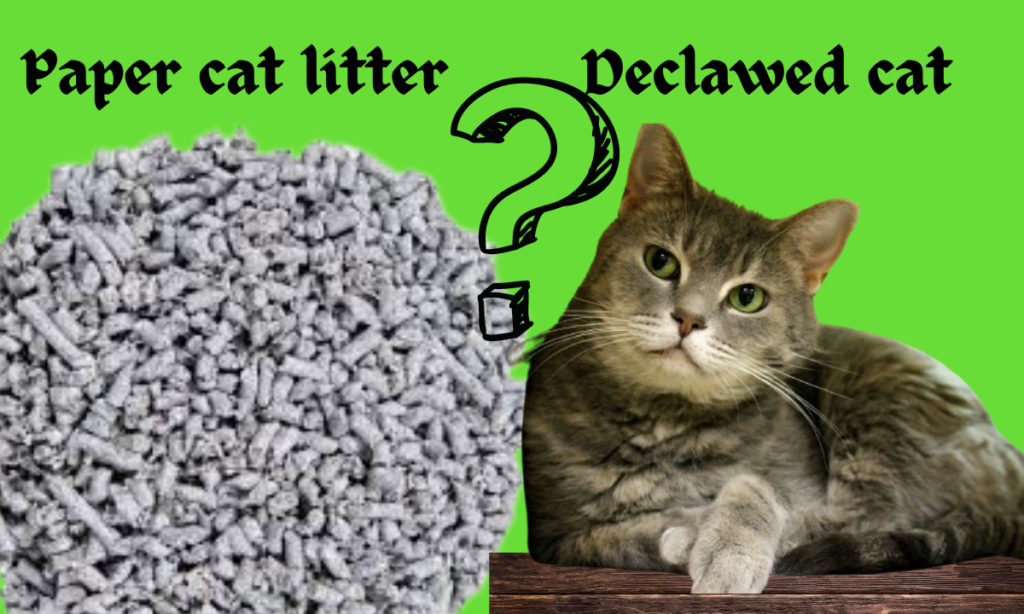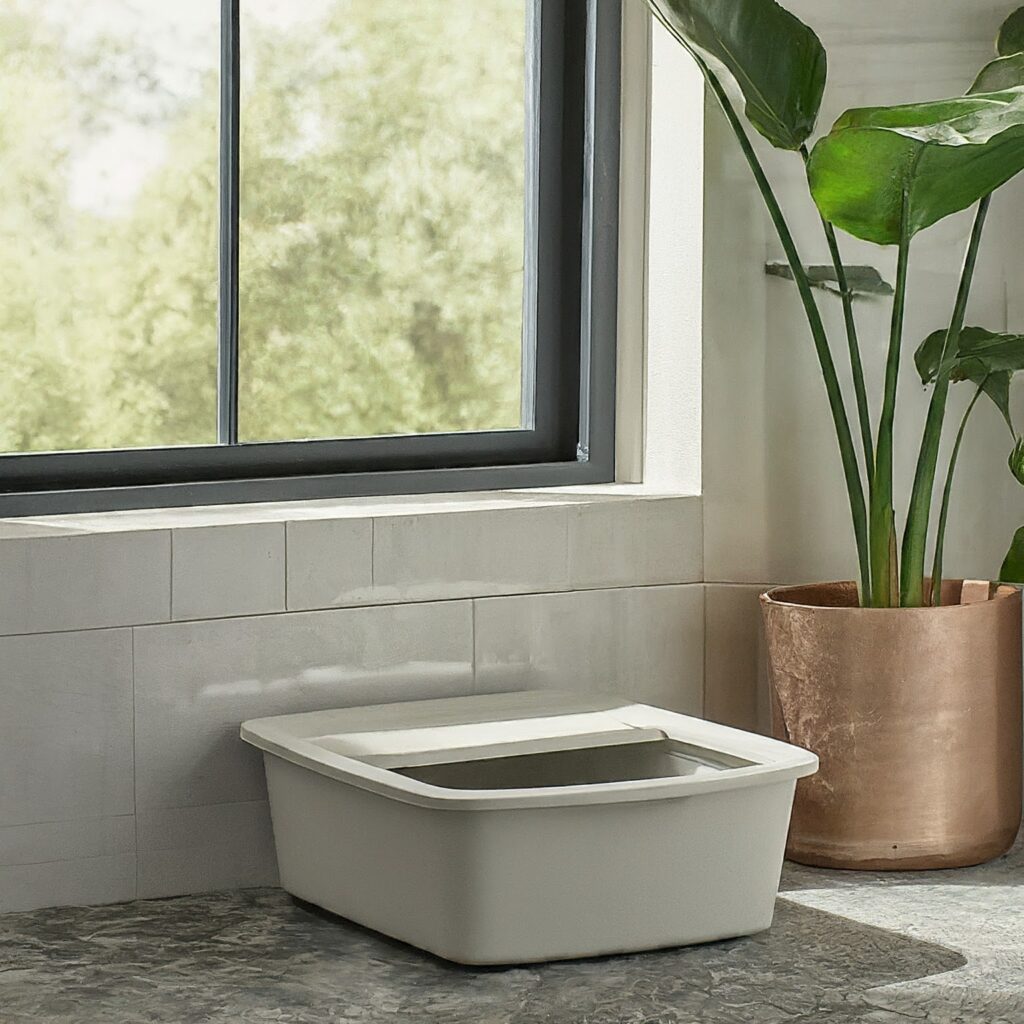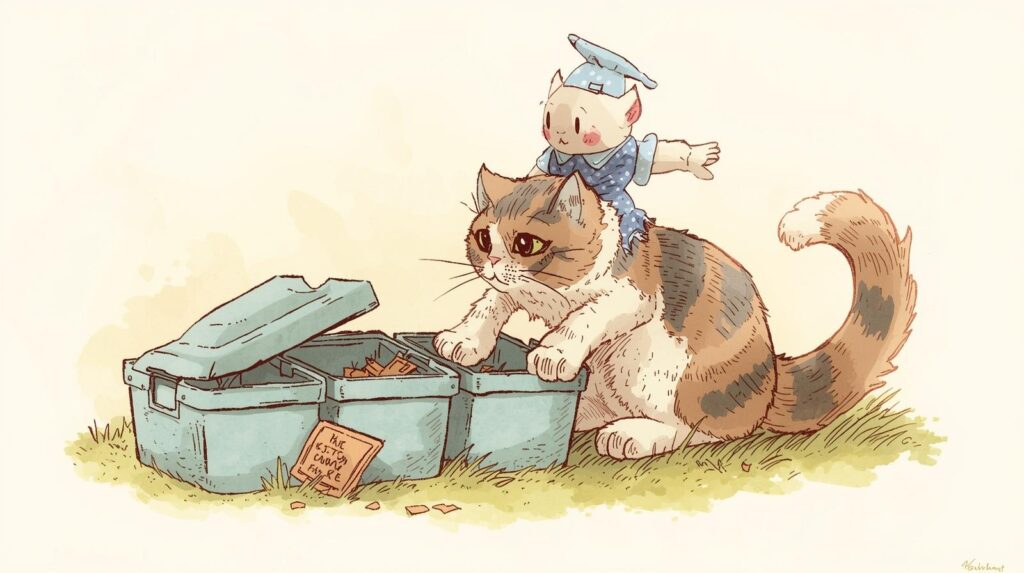One decision that some cat owners may face is whether to opt for declawing surgery, a procedure that involves the removal of a cat’s claws. While this choice is often made to prevent furniture damage or address behavioral issues, it’s crucial to understand the implications and provide appropriate care during the recovery process.

One key aspect of post-declawing care is selecting the right litter for your cat’s needs. Traditional clay or silica-based litters may not be suitable for cats recovering from declawing surgery due to their abrasive nature. Instead, softer alternatives like paper litter can help minimize discomfort and promote healing during this sensitive period.
How Long Should You Use Paper Litter After Declaw Surgery?
Most veterinarians recommend using paper litter for 10–14 days after declawing, or until your cat’s paws are fully healed. This time allows the wounds to close, stitches to dissolve, and the paws to toughen up before transitioning back to regular litter.
However, the exact recovery timeline can vary depending on:
- Your cat’s age and overall health – Younger, healthier cats may heal faster than older ones.
- Individual healing speed – Some cats may need a few extra days with paper litter for complete comfort.
Always follow your veterinarian’s advice, since they can best assess your cat’s specific recovery needs. Rushing the switch back to regular litter could lead to pain, bleeding, or even infection.
Why Use Paper Litter After Declawing?
After declaw surgery, your cat’s paws are extremely sensitive and vulnerable to infection. Using paper or shredded newspaper litter instead of traditional clumping or clay litter is highly recommended during this period.
- Soft texture prevents irritation: Paper pellets are gentler on healing paws, unlike rough or sharp clay litter that can cause pain or reopen wounds.
- Reduces risk of infection: Clay and clumping litters produce dust that may enter the surgical wounds, increasing the chance of infection. Paper litter is virtually dust-free, making it a safer option.
- Easier on sensitive paws: Since your cat will be tender and sore after surgery, paper litter provides a softer surface that encourages them to use the litter box without discomfort.
When Can You Switch Back to Regular Litter?
Switching back to regular litter after declaw surgery should only happen once your cat has healed enough to avoid irritation or infection. Most vets recommend waiting 10–14 days, but healing time may vary depending on your cat.
Signs your cat is ready include:
- No limping or signs of discomfort while walking.
- Surgical wounds are closed and dry.
- Stitches (if present) have dissolved or been removed by the vet.
Transitioning gradually is best:
- Start by mixing a small amount of your cat’s regular litter with paper litter.
- Slowly increase the ratio over several days until your cat is fully back on their usual litter.
- If your cat shows signs of pain or bleeding, switch back to paper litter and contact your vet.
Safe litter types to reintroduce first:
- Non-clumping, unscented litters (gentler and less dusty).
- After complete healing, you can transition to clumping litter if that’s your cat’s preference.
Best Litter Options for Cats After Declawing
When it comes to helping your cat recover comfortably after declaw surgery, choosing the right paper litter makes all the difference. Here are two excellent options and why they work so well:
Fresh News Paper Litter
FreshNews is made from 100% recycled paper, formed into soft pellets that are gentle on sensitive paws. Since it’s dust-free and non-clumping, there’s no risk of particles entering surgical wounds. It also has natural odor control without added chemicals or fragrances, which keeps your cat’s environment clean and safe during recovery.
Choose this if you want an eco-friendly, vet-safe option that balances comfort, cleanliness, and odor control.
BreederCelect Paper Litter
BreederCelect is another top choice because it’s made from recycled paper fibers with no additives, inks, or chemicals. Its pellet texture provides a soft but supportive surface that won’t irritate healing paws. This litter is also highly absorbent and lightweight, making it easy to clean and maintain during the crucial recovery period.
Choose this if you want a natural, chemical-free option that’s gentle on paws and easy for you to manage.
The goal is to prioritize safety and comfort over convenience during recovery. Once your cat’s paws are healed, you can transition back to their regular litter preference.
Importance of Litter Choice After Declawing
After undergoing declawing surgery, cats require special care to ensure a smooth and comfortable recovery. One crucial aspect of this care is selecting the right litter for their litter boxes. Traditional clay or silica-based litters, while popular choices for many cat owners, may not be suitable during the postoperative period. These litters can be abrasive and harsh on the sensitive paw pads of declawed cats, potentially causing discomfort or irritation.
Choosing the best cat litter according to your cat’s needs is essential. Here is a guide to the 11 best cat litters in the market
Enter paper litter—a softer, gentler alternative that provides a more comfortable environment for cats as they heal from declawing surgery. Paper litter is typically made from recycled paper or other biodegradable materials, offering a soft and cushioned surface for cats to walk on. Its non-abrasive nature helps minimize the risk of paw irritation, making it an ideal choice for cats recovering from declawing.
Tips for Keeping Your Cat Comfortable During Recovery
Declaw surgery is a major procedure, and your cat needs extra care during the healing process. In addition to choosing the right litter, here are a few ways to make recovery smoother:
- Keep the litter box clean daily: Scoop frequently and replace litter often so your cat’s paws stay free from bacteria. A clean box reduces the risk of infection.
- Place the litter box in a quiet, stress-free area: Cats recovering from surgery need rest. Avoid loud areas or busy rooms that could stress your pet. If you have a small apartment, read this post Where to Put a Litter Box in a Small House: Complete Guide
- Monitor for signs of infection: Watch for swelling, bleeding, limping, or discharge around the paws. Contact your vet immediately if you notice anything unusual.
- Use soft bedding around the home: Provide cozy blankets or soft bedding so your cat has comfortable resting spots that won’t put pressure on healing paws..
When the time comes to make the switch, it’s essential to do so gradually to minimize any stress or discomfort for your cat. Start by gradually introducing small amounts of the new litter alongside the paper litter in the litter box. This allows your cat to become familiar with the new texture and scent while still having the security of their preferred litter option.
Tips for Using Paper Litter Effectively
- Choose high-quality paper litter made from natural, biodegradable materials.
- Provide an adequate depth of 2-3 inches to cover the litter box surface.
- Maintain cleanliness by scooping waste regularly and replacing soiled litter promptly.
- Monitor moisture levels and replace damp litter to prevent clumping.
- Consider supplemental odor control products or additives for freshness.
- Provide multiple litter boxes for easy access, especially in multi-cat households.
- Observe your cat’s behavior for signs of discomfort or litter box avoidance.
- Transition gradually to traditional litter if needed, mixing small amounts over time.
Transitioning Back to Traditional Litter
Transitioning from paper litter back to traditional options marks a significant step in your cat’s recovery journey after declawing surgery. Here’s how to facilitate a smooth transition:
- Introduce traditional litter gradually alongside the paper.
- Increase the traditional litter amount over time.
- Monitor the cat’s response and adjust the transition pace.
- Maintain a clean litter box for proper usage.
- Seek vet guidance for personalized advice.
- Watch for signs of discomfort during the transition.
- Fully switch to traditional litter when comfortable.
Monitoring Your Cat’s Health and Comfort after Declawing:
Observing your cat’s behavior and physical well-being is crucial during the post-declawing recovery period. Keep a close eye on your cat for any signs of discomfort or stress, such as limping, reluctance to walk, or avoiding the litter box.
Additionally, regularly check your cat’s paw pads for signs of redness, swelling, or irritation, which could indicate complications or infection.
Ensure that your cat continues to use the litter box consistently and watch for any changes in their activity level or appetite, as these can be indicators of underlying issues requiring attention. If you notice any concerns or abnormalities, don’t hesitate to seek veterinary advice promptly.
Conclusion
In conclusion, monitoring your cat’s health and comfort during the post-declawing recovery period is essential for promoting healing and ensuring a positive outcome. By observing your cat’s behavior, checking their paw pads regularly, and maintaining a clean and comfortable environment, you can help facilitate a smooth recovery process.
Remember to seek veterinary advice promptly if you notice any signs of discomfort or concerns about your cat’s well-being.
With proper care and attention, you can support your cat through this sensitive time and ensure they experience a comfortable and successful recovery after declawing surgery.
FAQs About Paper Litter After Declawing
What litter is best for cats after declaw surgery?
Vet-recommended options include Fresh News (paper pellets), Breeder Celect litter, or any unscented, non-clumping, dust-free litter that’s gentle on paws.
Can clumping litter hurt my cat’s paws after declawing?
Yes. Clumping litter produces dust that can get into surgical wounds, causing irritation or infection. It’s best avoided until your cat has fully healed.
Is paper litter necessary after declawing?
Yes. Paper litter is strongly recommended because it’s soft, dust-free, and reduces the risk of complications during recovery.
How to prevent infection after declaw surgery?
Keep the litter box clean, use paper litter, monitor your cat’s paws daily, and follow all post-surgery care instructions from your veterinarian
Can I use sand or soil instead of paper litter after declawing?
No. Sand and soil may harbor bacteria that can enter surgical wounds and cause infections. Paper litter is the safest choice.
What happens if I don’t switch to paper litter after declawing?
Using clay or clumping litter too soon can lead to dust and particles entering the wounds, increasing the risk of pain, delayed healing, or infection.
How often should I change paper litter after declaw surgery?
It’s best to scoop daily and fully replace paper litter every 2–3 days. A clean box is essential to prevent bacteria from affecting the healing paws.
My cat won’t use paper litter. What should I do?
Some cats resist paper pellets if they’re used to finer textures. Try gradually mixing in a small amount of paper litter with their usual type (before surgery) so they’re familiar with the texture.
Disclaimer: It’s important to acknowledge that declawing is not considered a humane or ethical practice by many experts in the field of veterinary medicine and animal welfare. The procedure involves the amputation of a cat’s toes at the first joint and can lead to long-term physical and behavioral issues. This content is written with the understanding that some cats may, unfortunately, undergo declawing surgery, and Purrfect Insights aims to provide support and guidance for those navigating the postoperative period to ensure the best possible care and comfort for their feline companions.


